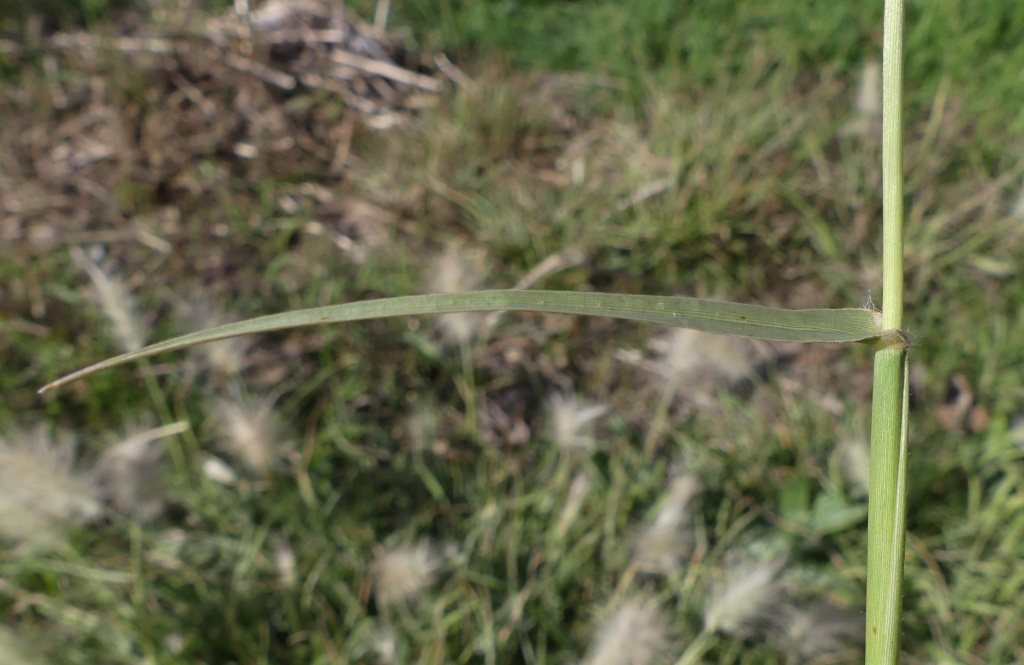Cenchrus longisetus
M.C.Johnst. FeathertopLong-rhizomatous or sometimes tussock-forming perennial. Culms erect, to c. 70 cm high. Leaf-blades flat or channelled, to 30 cm long and 5 mm wide, glabrous or sparsely hairy near base, scabrous; sheaths ciliate along margins; ligules 0.5–1 mm long, with longer lateral hair-tufts. Inflorescence a soft, moderately dense ovoid to broadly cylindric panicle 3–10 cm long; spikelets 1–4 per branch, subtended by an involucre 25–45 mm long, of shining white (rarely purplish) plumose bristles. Spikelets lanceolate, 7–11 mm long; lower glume rudimentary, c. 0.5 mm long; upper glume 1-nerved, lanceolate, 2–4 mm long, membranous; lower floret staminate or sterile, its lemma slightly shorter than the spikelet, 7–9-nerved, palea subequal to lemma; upper floret bisexual, lemma equal to spikelet, resembling lower lemma, palea subequal to lemma. Flowers Nov.–May.
MuM, Wim, GleP, VVP, VRiv, RobP, MuF, GipP, OtP, WaP, Gold, CVU, NIS, EGL, HSF. Naturalised in all States except NT. Native to tropical north-east Africa, and Yemen. Occasionally grown in gardens for its ornamental inflorescence, but readily escaping and becoming a weed in lawns, along roadsides and in pastures where not favoured as fodder by stock.
Walsh, N.G. (1994). Poaceae. In: Walsh, N.G.; Entwisle, T.J., Flora of Victoria Vol. 2, Ferns and Allied Plants, Conifers and Monocotyledons, pp. 356–627. Inkata Press, Melbourne.
 Spinning
Spinning




